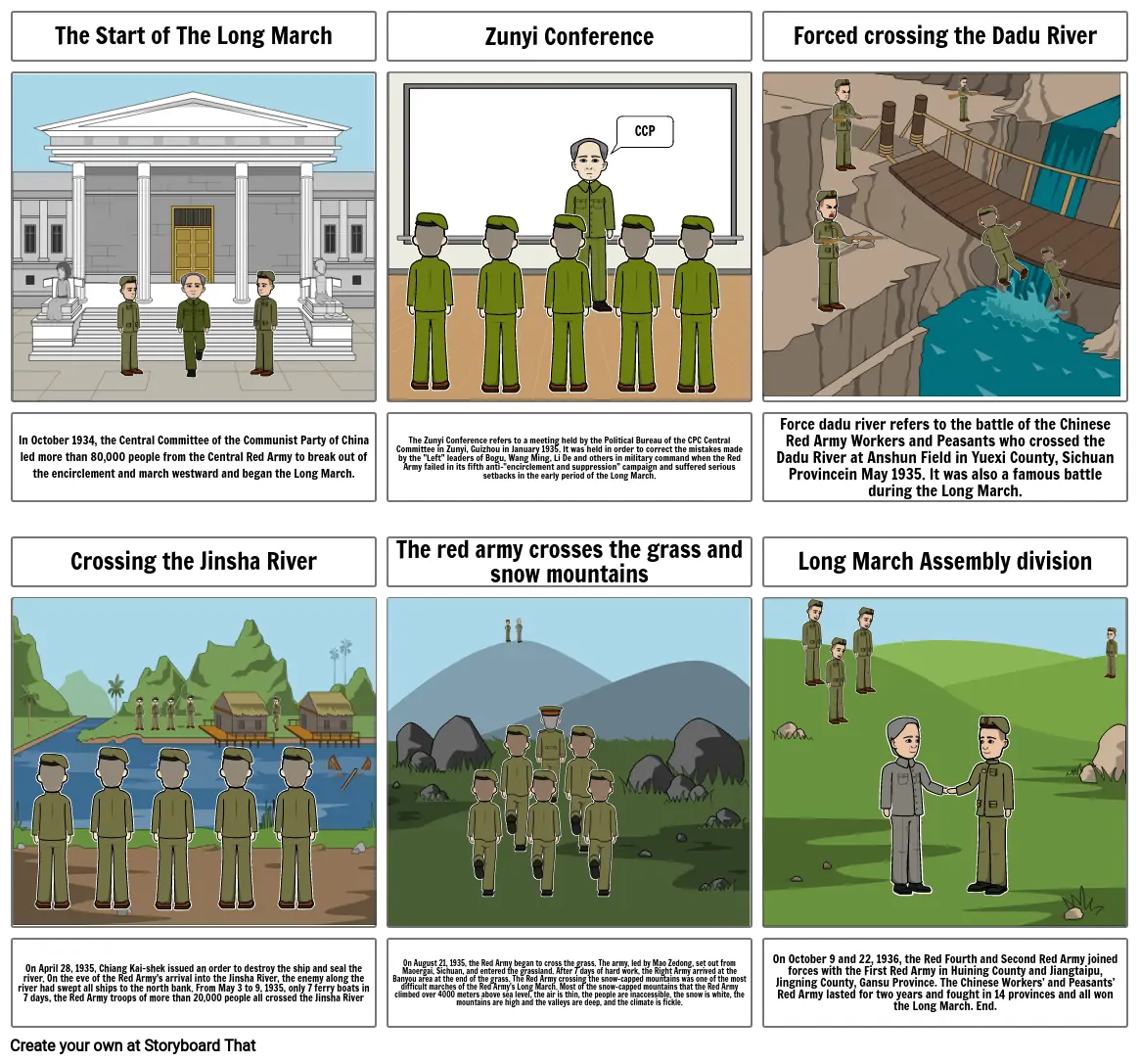8.2 Chris Li Long March of the Red Army

Storyboard Text
- The Start of The Long March
- Zunyi Conference
- CCP
- Forced crossing the Dadu River
- In October 1934, the Central Committee of the Communist Party of China led more than 80,000 people from the Central Red Army to break out of the encirclement and march westward and began the Long March.
- Crossing the Jinsha River
- The Zunyi Conference refers to a meeting held by the Political Bureau of the CPC Central Committee in Zunyi, Guizhou in January 1935. It was held in order to correct the mistakes made by the "Left" leaders of Bogu, Wang Ming, Li De and others in military command when the Red Army failed in its fifth anti-"encirclement and suppression" campaign and suffered serious setbacks in the early period of the Long March.
- The red army crosses the grass and snow mountains
- Force dadu river refers to the battle of the Chinese Red Army Workers and Peasants who crossed the Dadu River at Anshun Field in Yuexi County, Sichuan Provincein May 1935. It was also a famous battle during the Long March.
- Long March Assembly division
- On April 28, 1935, Chiang Kai-shek issued an order to destroy the ship and seal the river. On the eve of the Red Army's arrival into the Jinsha River, the enemy along the river had swept all ships to the north bank. From May 3 to 9, 1935, only 7 ferry boats in 7 days, the Red Army troops of more than 20,000 people all crossed the Jinsha River
- On August 21, 1935, the Red Army began to cross the grass. The army, led by Mao Zedong, set out from Maoergai, Sichuan, and entered the grassland. After 7 days of hard work, the Right Army arrived at the Banyou area at the end of the grass. The Red Army crossing the snow-capped mountains was one of the most difficult marches of the Red Army's Long March. Most of the snow-capped mountains that the Red Army climbed over 4000 meters above sea level, the air is thin, the people are inaccessible, the snow is white, the mountains are high and the valleys are deep, and the climate is fickle.
- On October 9 and 22, 1936, the Red Fourth and Second Red Army joined forces with the First Red Army in Huining County and Jiangtaipu, Jingning County, Gansu Province. The Chinese Workers’ and Peasants’ Red Army lasted for two years and fought in 14 provinces and all won the Long March. End.
Over 30 Million Storyboards Created

